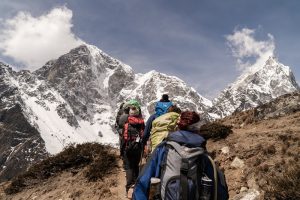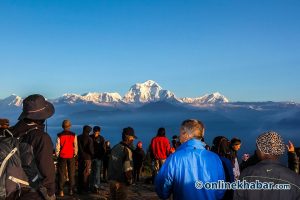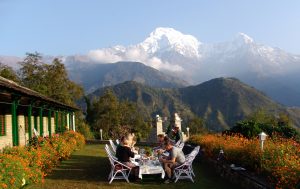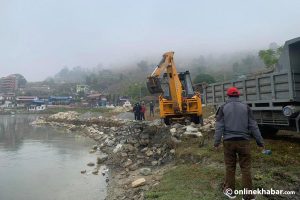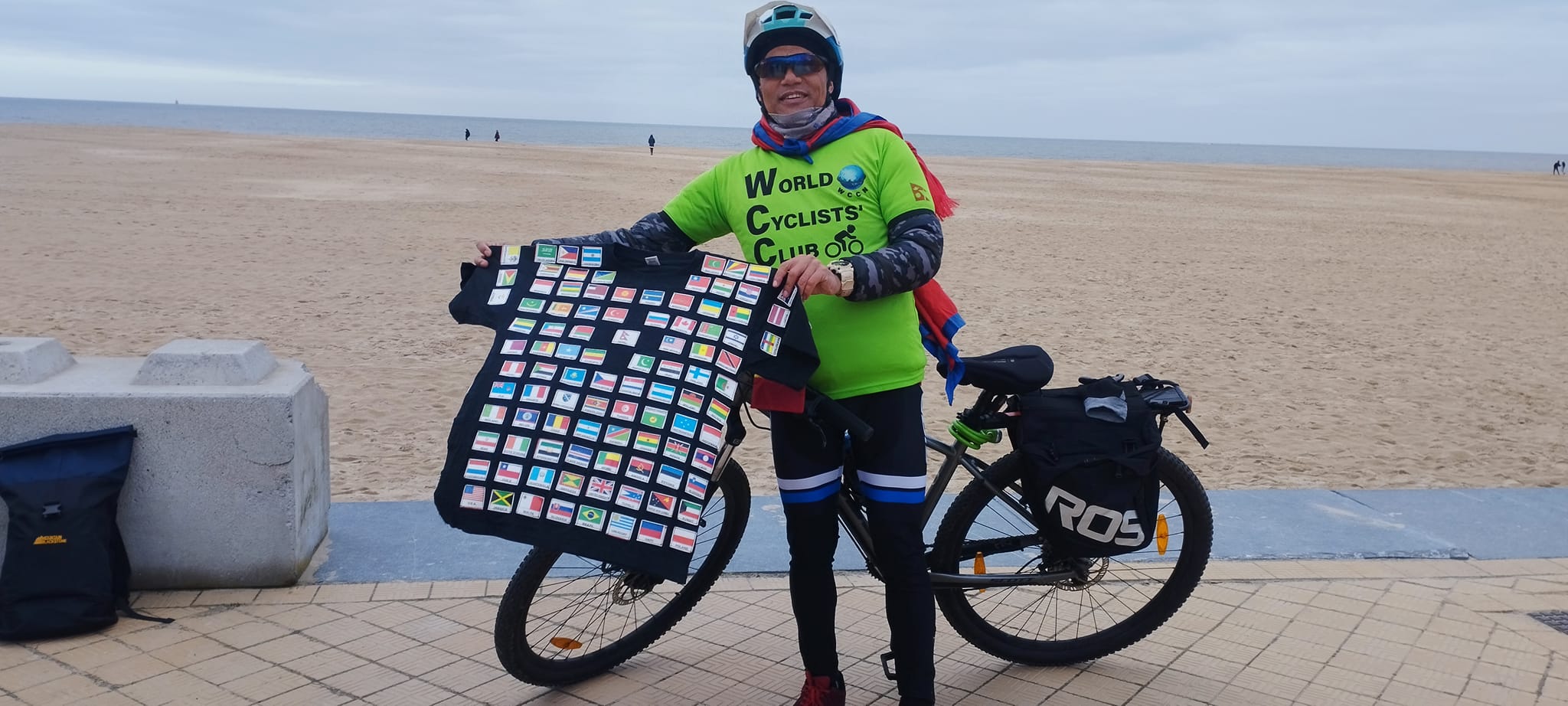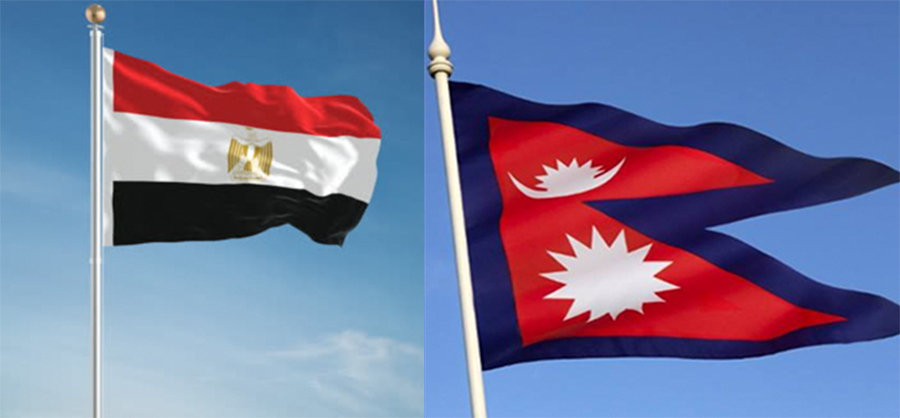(Read the first part of the story.)
At daybreak, the burgeoning Sherpa Gaun (2,563m) looked like in the making of a miniature town. Blue corrugated zinc-roofed houses seemed to replace the once slate-roofed hamlet. And, as the village turned into a frequent stopover for the Langtang Valley trekkers, the place seemed marked by much life and activity.
After a hearty breakfast, the bikers prepared themselves to hit the trail. “First thing first, give your bikes a once-over. You have to care for them, too,” the skipper, Khashing Rai, barked out. The group hastened to dust their bikes, check the brakes and lightly lube the chains.
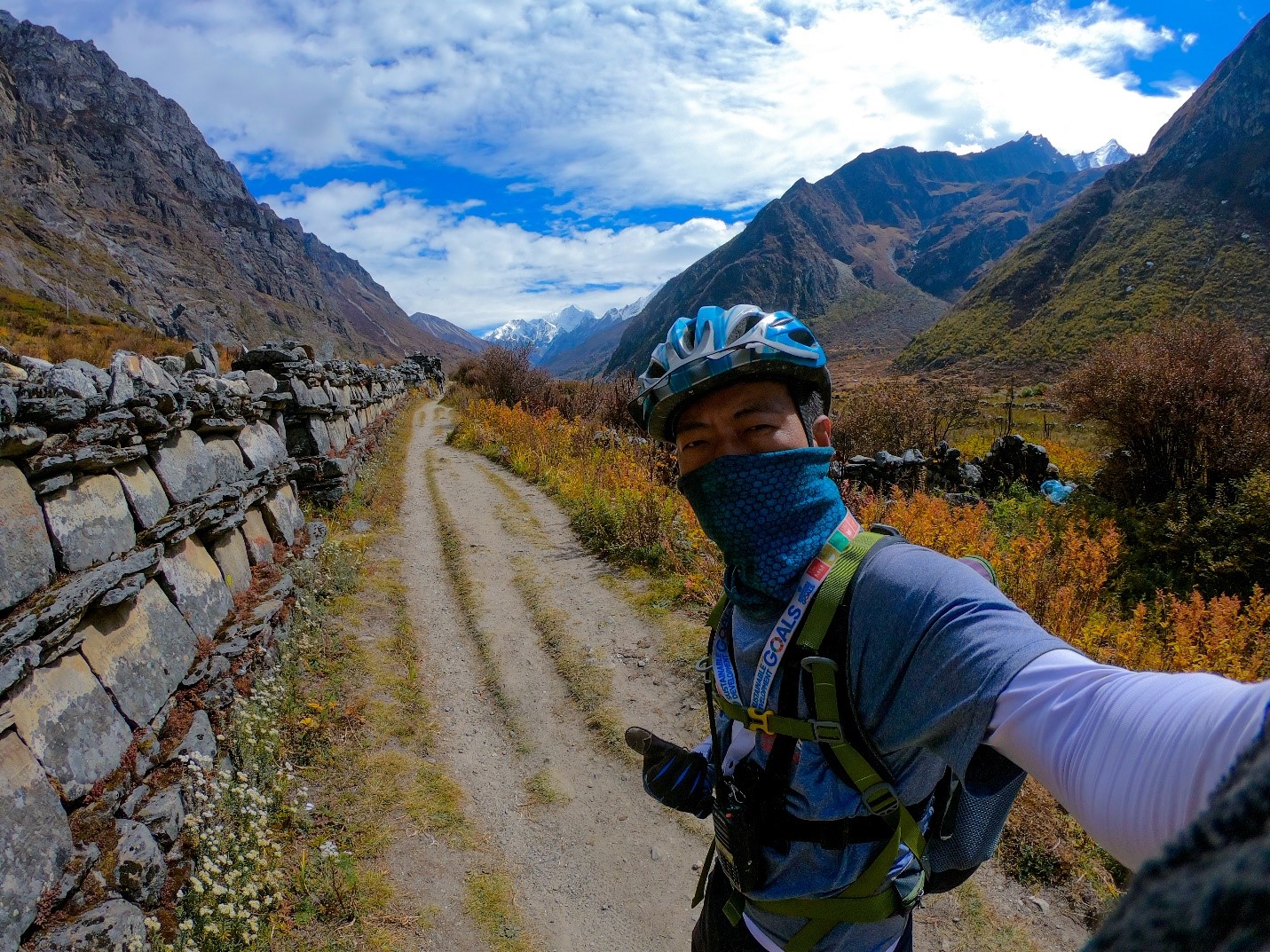
Everybody was ready for newer challenges, for all that their muscles ached and their limbs groaned with the last two days’ ride. After something like two hours on the trail, riding and pushing, the team leader asked the team to take a short break. “Guys, now prepare yourself for the worse—the toughest section of our trip as it will bear lugging for the most part—so full steam ahead,” summoned the team leader. “Aye, aye, Sir,” Shishir quipped and gave the Cub Scout salute.
Diwash, on the other hand, looked daggers at Khashing. He did not expect the trail to be that gruelling. Nobody did. But everyone was duly drilled that the track was trekking and not a cycling route. “I almost felt like bashing him up at that moment,” lamented Diwash mock-seriously to me during our brief meet for the story.
The track first intervened daunting cliffs, once said to have trodden by the mule trains. Needless to say that one look at the sheer drops gave you the creeps. One false move could prove fatal. Shishir bravely acted like the Good Samaritan and assisted the lady riders. Anamica and Rojisha, though, kept their aplomb despite the punishing progress.
To Thangshyap
A little after the ordeal, the group arrived at a small hamlet called Rimche and stopped for a breather, their lungs bursting at the seams. After something like a half-an-hour, they reached Lama Hotel. Curiously, the small settlement previously named Changtang came to be called Lama Hotel when the route became popular, and the first-ever hotel offering food and accommodation to the weary trekkers happened to be the Lama Hotel. And the name stayed that way. Several lodges and teahouses huddled together in a cluster.
After a deserving tea-break at Rimche, the riders stopped for lunch at a place called Riverside, a small bunch of hamlets close to the Langtang Khola. Everybody looked spent. Little did they know that the forthcoming course until Purano Ghoda Tabela involved mostly lugging the bike on stone steps, going up and down.
Again the lady bikers proved their mettle and did equally well lugging their bikes (a normal mountain bike weighs from 14 to 16 kilos) alongside their male counterparts. In between brief rests, the team continued, but the riders were making very slow progress. As the day wore off, Khashing realised that it would be quite dark by the time they made it to Thangshyap, and the guesthouses might run out of rooms.
Shishir came to the rescue and volunteered to fast-track it to Thangshyap following short-cuts. He was in Thangshyap in time to book the rooms for the night in the Potala Guesthouse. The name sounded very familiar. Then he recalled a guesthouse with that name at Thamel.
The shadows lengthened as the group kept lugging their bikes. Darkness fell when they finally arrived at Thangshyap, covering 12 km that day. After supper, everyone hopped into bed early, obviously drained but with the comforting feeling that their final destination lay just 10 kilometres away. They could not wait for the first call of the rooster at the crack of dawn.
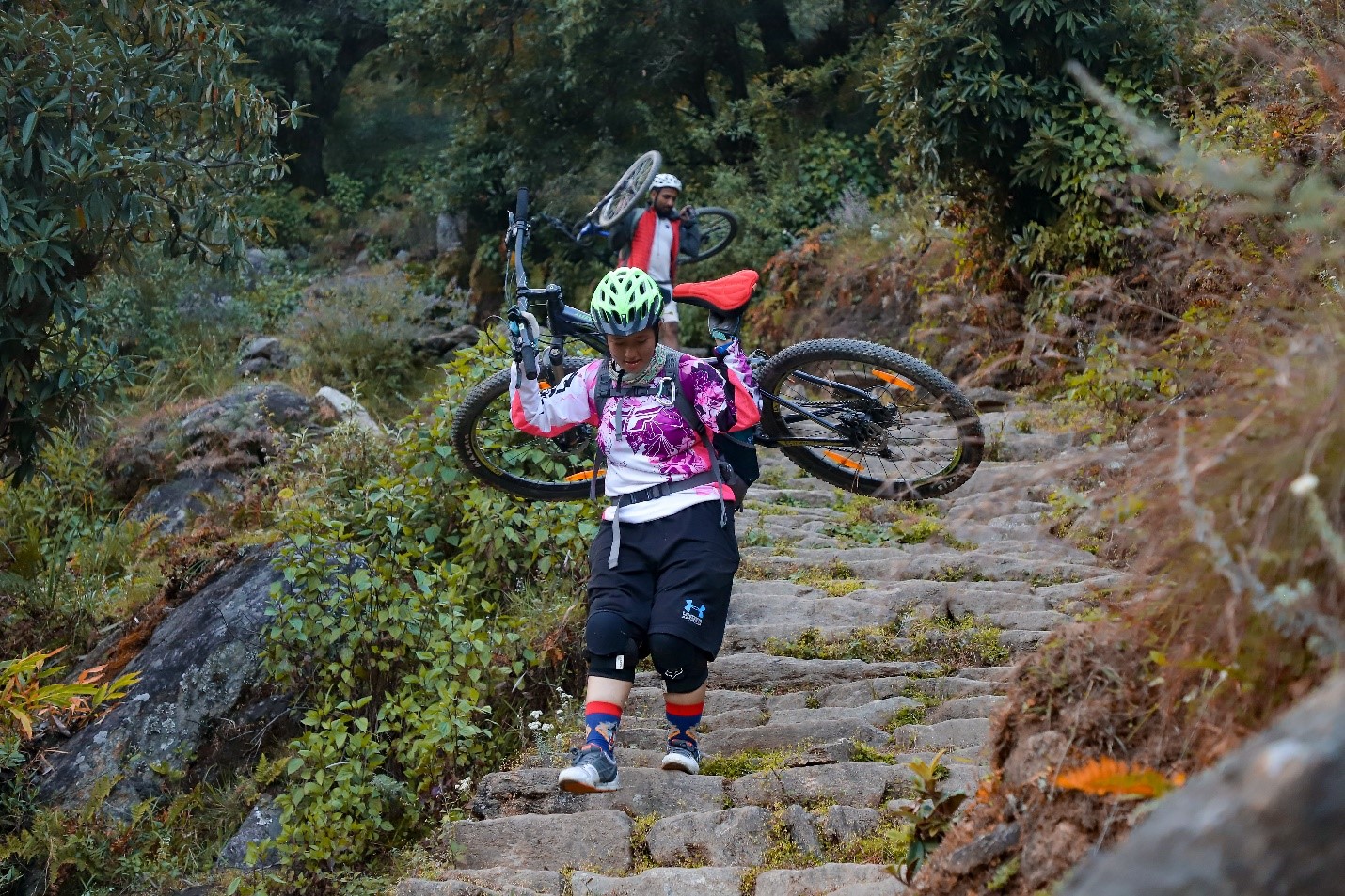
Day Four saw the riders hit the trail after an early breakfast—their last day to their destination, Kyanjin Gompa, 10 km away. As the trekking season had begun, the group kept bumping into foreign trekkers—Canadians, Aussies, Germans, South Africans, Malaysians, you name it. One group, what looked like a whole contingent (almost 20 of them) of South Koreans, even stopped to talk with them. It turned out they belonged to an alpine club back home.
Were they surprised to see the riders on the trail? ‘Stunned’ would be the right word as they had not the least bit expected to see mountain bikers on that dangerous trail. What’s more, their jaws dropped when they saw Anamica and Rojisha rubbing shoulders with their male peers.
A little later, they ran into a squad of armed military personnel, who gave them a good dressing-down for recklessly attempting the trail on their bikes. The army guys were doing a routine patrol, keeping a vigil on illegal hunting. They thought the cycling group was nothing but insane. They were beefing about the extra responsibility of rescuing that could weigh upon them should something go wrong. “Just be extra careful,” cautioned the commanding officer. That had a sobering effect on the team.
Old Lantang Village site
Despite three days on the trail, the riders were dying for the view of the great Langtang Range with the towering snow-clad peaks. So far, they only got flitting views of the peaks in the distance. The landscape seemed confined to the undulating craggy hills with lush forests, deep ravines, narrow gorges, and valleys—nevertheless, idyllic because they knew well that they would very soon miss out on them after getting back home.
As the group slogged ahead, they sighted a small Tamang teahouse community called the Gumba village. In another two hours, the riders arrived at the old Langtang Village (3,400 m), the historic disaster site of the April 2015 earthquake.
The morning of April 25, 2015, proved a doomsday for the ill-fated Langtang Village, which sat in a basin directly beneath the south face of the towering Langtang Lirung (7,227 m). At 11:56 am that day, when the 7.6-magnitude earthquake hit Nepal, a massive chunk of Mt Lantang Lirung, fell off bringing in its wake huge boulders and ice floes, almost emptying an entire lake, all crashing through a narrow gulley to slam into the small village.
Nothing but a pile of huge boulders, snow, and mud remained at the site. The massive avalanche took a heavy toll, and the thriving village, with nearly 55 lodges and several teahouses buried. More than 300 people perished with many unaccounted. The death toll included some foreign trekkers, guides, and porters, too.
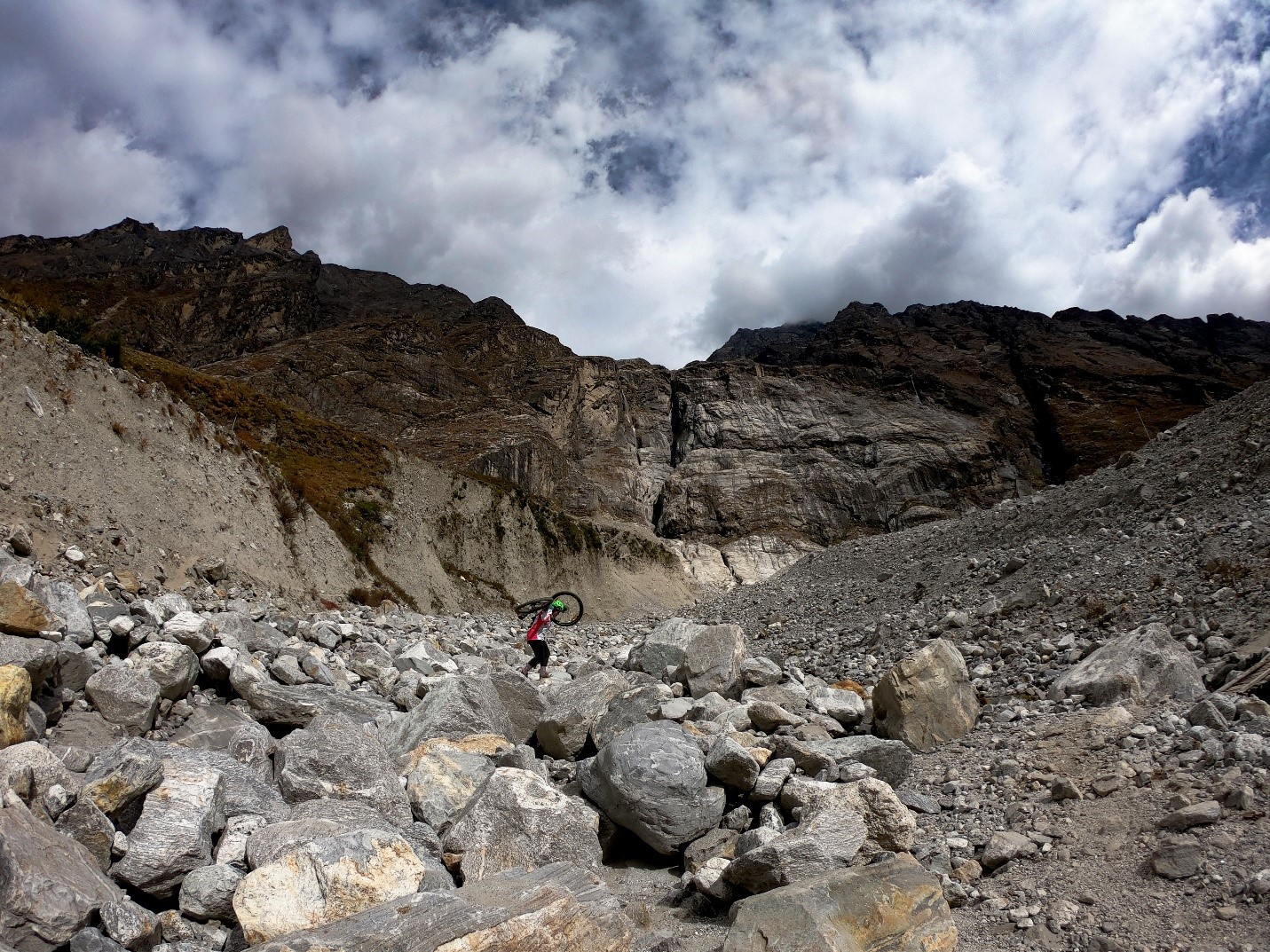
The group stopped by the new Langtang Village, relocated some three hours above the earthquake-devastated site. “After almost four years since the earthquake, we are still struggling to reestablish ourselves in this new location,” said one elderly man from the village who had survived the quake. After the group left the new Langtang Village behind, suddenly, Khashing stopped, and his camera caught the first sight of the Langtang Lirung visible through a gap amidst trees.
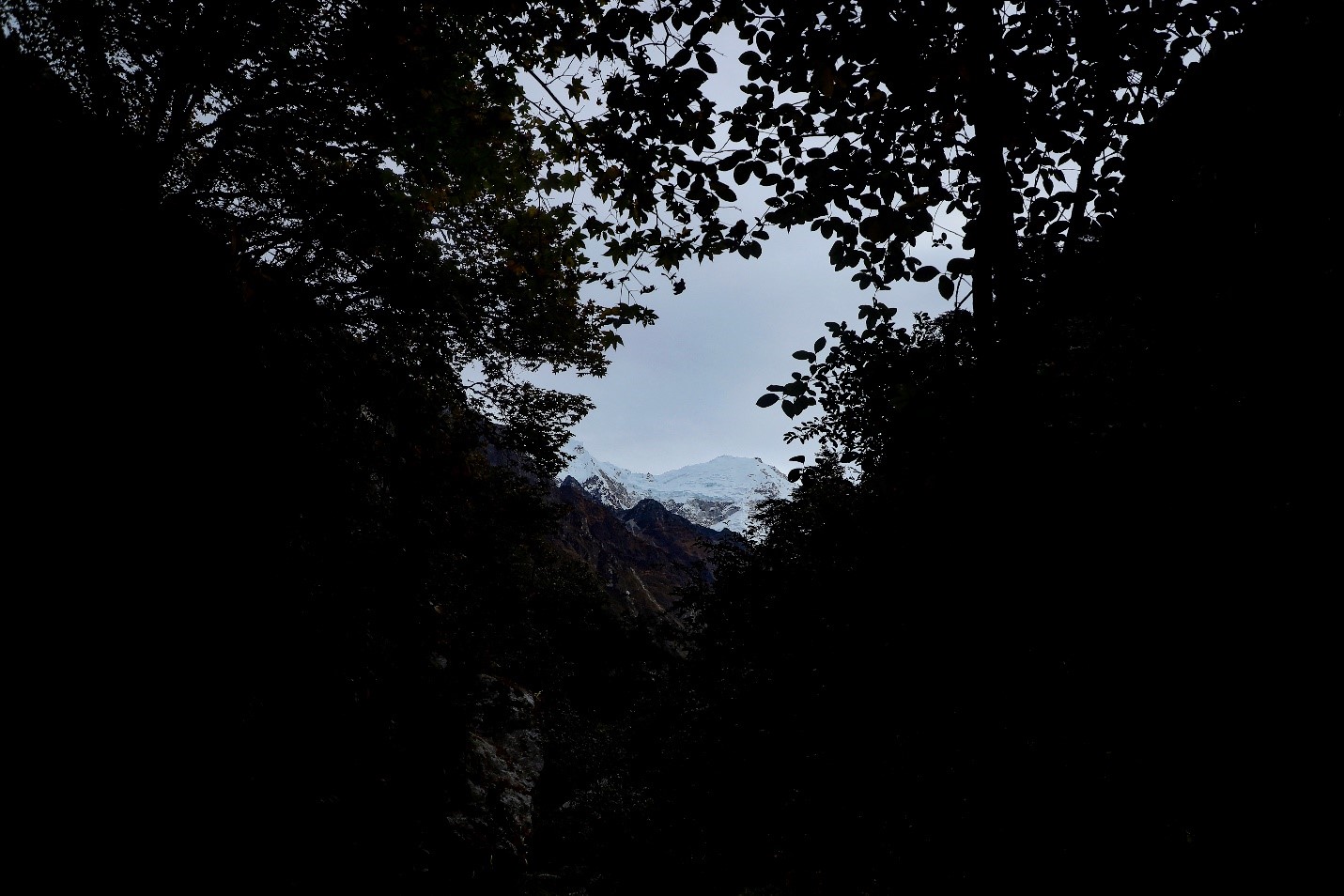
The ride on the last day to Kyanjin Gompa seemed very slow, on account of the hard terrain and the elevation. “Guys, we stop for lunch at Mundu. From there, it’s like three more hours to Kyanjin,” informed Khashing. The group tagged along by Shishir arrived at Mundu a little past noon, right on time for lunch. It was after Mundu, the group was rewarded with the spectacular sights of the Himalayas.
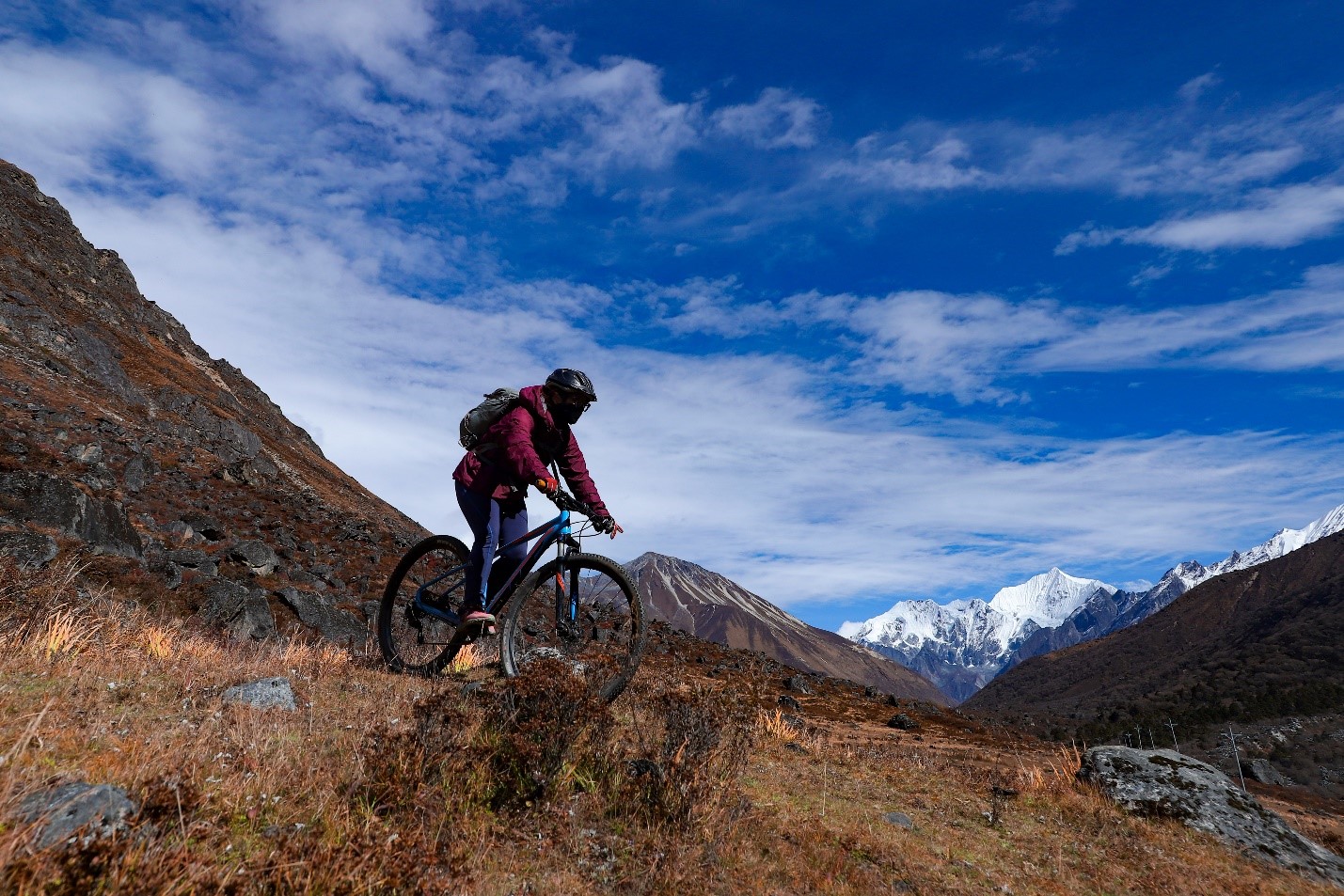
It looked the snow-capped mountains were getting closer as they forged ahead towards Kyanjin. That and the comforting feeling that their final destination lay not far away made everyone excited and resuscitated. Diwash, a little withdrawn because of exhaustion, even fell into an animated chat with the rest of the team.
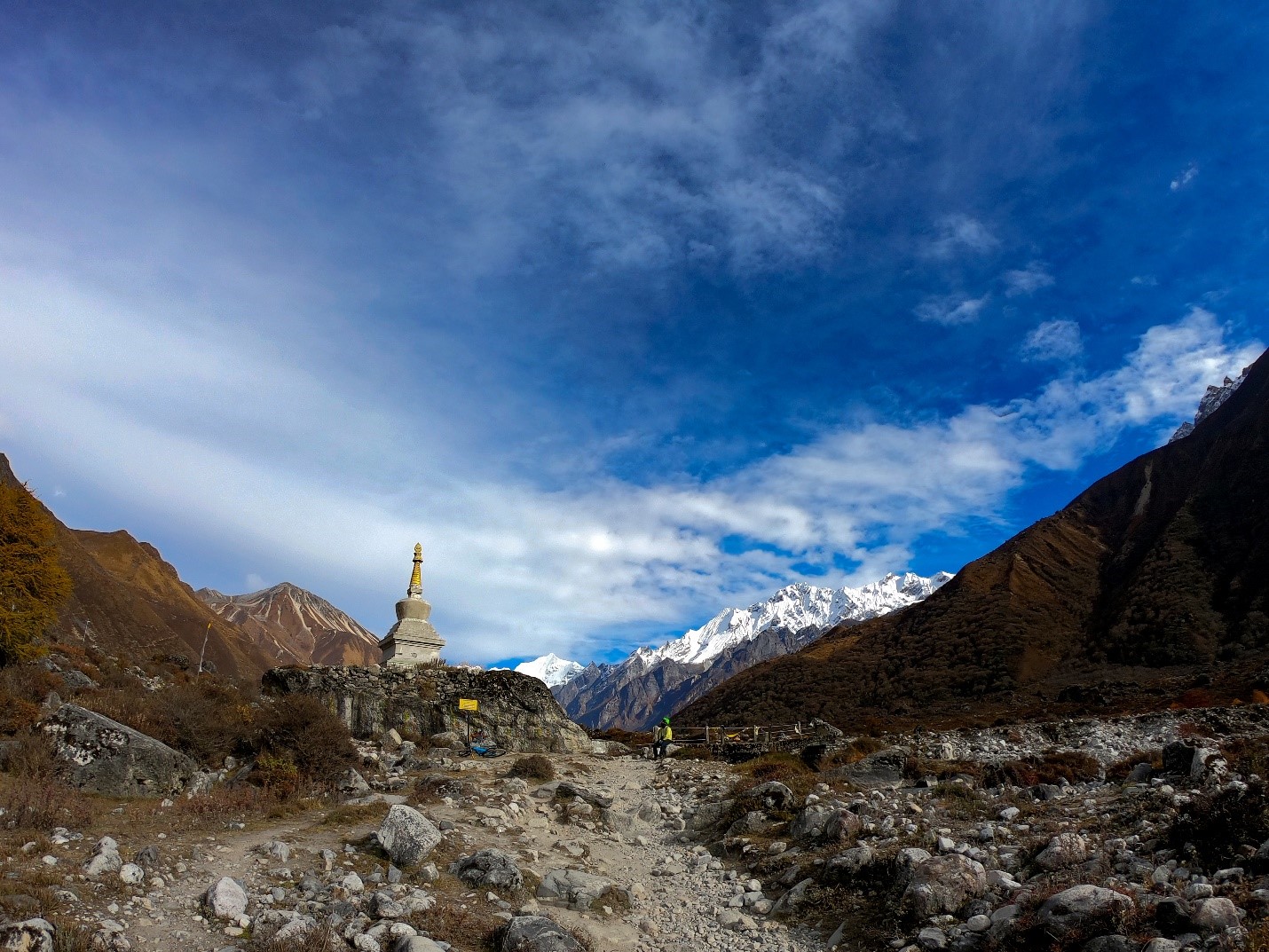
The rest of the trail brought the riders near and nearer to the towering Langtang range, punctuated by bare hills that rolled out as far as the eyes could see. The team took their time enjoying the panorama.
A little later, the group stopped to watch a herd of yaks grazing on a sloping meadow as a row of peaks soared behind. The bovines seemed to be on their own as no herder was on sight. The scene stole the heart of every rider, and they gawked at the scene, mesmerised.
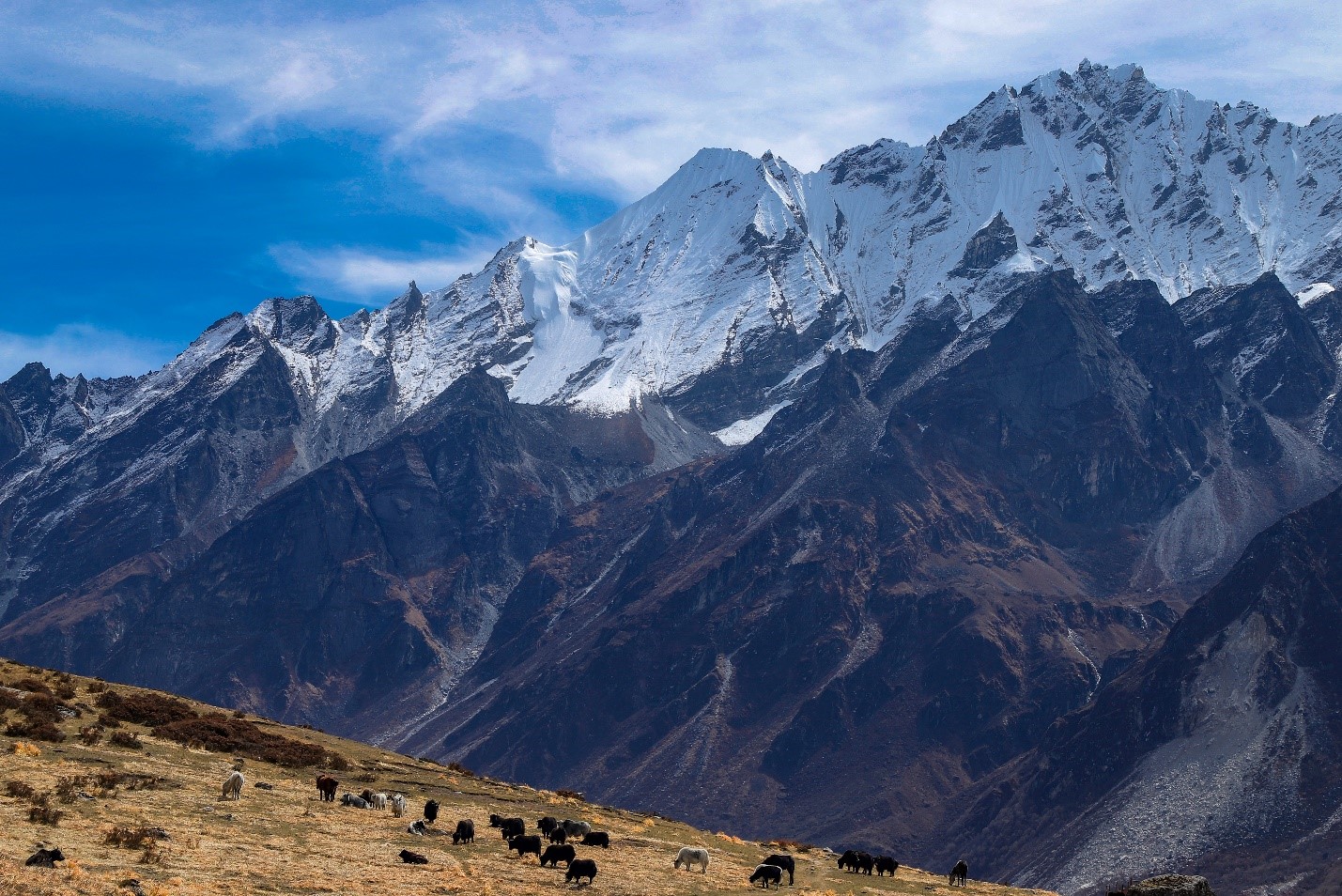
Kyanjin Gompa
From there on, the group could not resist themselves from frequently stopping for a photo-shoot, or two. It looked, everyone was on a cavorting spree. Being that their destination was just an hour away, the riders took the liberty to indulge in a little time-killing on the virgin landscape. “Pure bliss,” called out Rojisha.
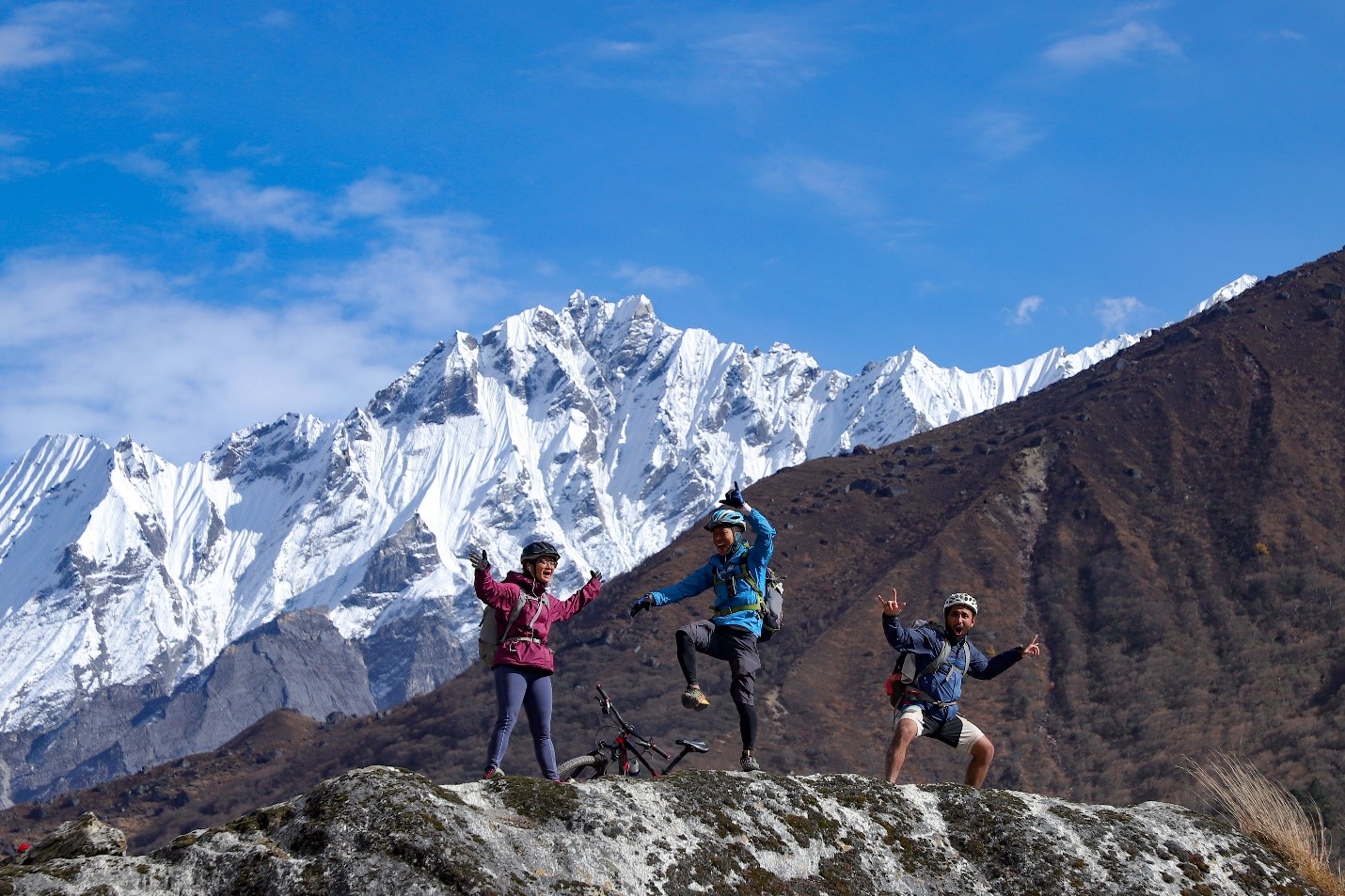
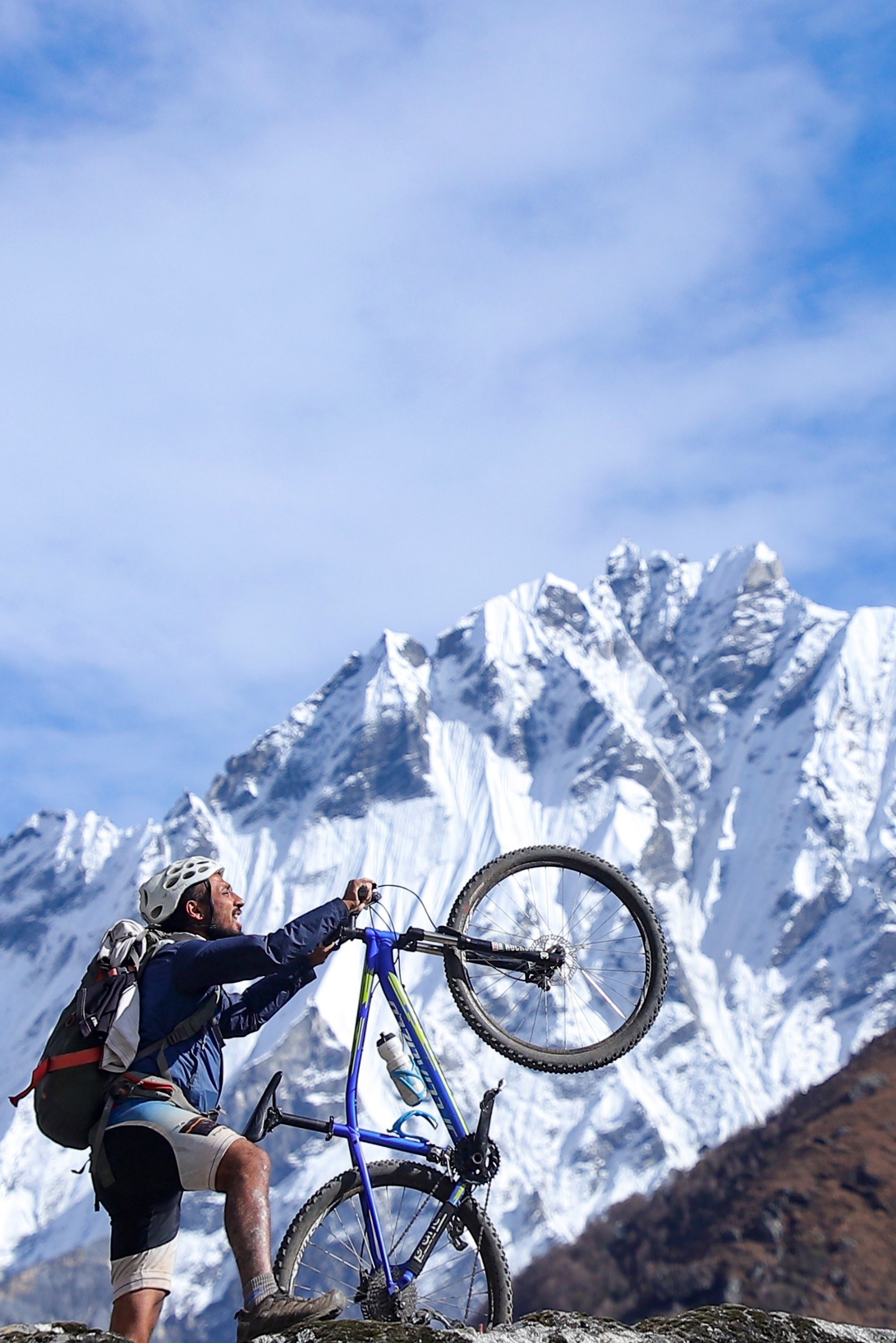
Khashing called out to the group to get going as they’d to make it in time to Kyanjin Gompa and find a lodge for the night. As the trekking season was in, the place might run short of accommodation. Spellbound by the beautiful sight, the riders seemed lulled into a trance and did not wish to make a move. Finally, they hopped onto their saddles. Another hour on the track finally brought the riders to the end of their journey, the Kyanjin Gompa Village.
End of Part II
Images by: Khashing Rai




